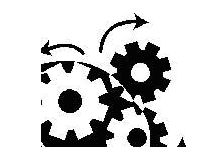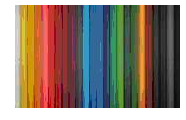EUREKA: MAKING BRILIANT IDEAS!
WRITTEN BY: JOEY NG
Eureka! – Making Brilliant Ideas Happen
A book review by Joey Ng
9/6/2010
‘Imagination is more important than knowledge.’ – Albert Einstein.
Ideas are generated through imagination. Anyone can imagine because all it takes is to answer the question, ‘What I want’. However, making our ideas viable and practical, answering the question, ‘What I can’, is another matter altogether. This book provides some interesting pointers on how to generate ideas and of course, make them happen!
First and foremost, like other books on creativity and innovation, the author identifies the correlation between creativity and knowledge. The more you know, the more you are likely to generate brilliant ideas and most importantly, make them happen. Research has shown that it took geniuses like Einstein and Mozart around 10 years to come out with their first meaningful creation. It makes all the sense as imagining without substantial knowledge is as wild as it can get. With more experience and skill, your ideas will be more in tune with reality, thus, making it more likely to happen.
Here are other interesting notes I picked up: How to generate ideas?

Whenever you need tobe resourceful in life and to get ideas, you will use your creativity. The urge to create is at the core of what makes us human and is one of the big distinguishing differences that make us members of the dominant species on this planet.
Intelligence is at the heart of creativity. Eureka shed some interesting light between traditional intelligence and creative intelligence. The former is placed as a form of analysis, orientating to ‘one right answer’ and limit itself to what currently exists. The latter, involves synthesizing, evoking feelings and fantasies and speculates on the ‘what might be’. It is creative intelligence’s ‘ability’ to synthesis
ideas in specific context that allows brilliant ideas to happen.
An estimated 5% of our brain is under conscious control, the rest, lies in the unconscious. One of the basic function of the unconscious is it acts like a scanner that helps direct our conscious to where the attention is needed. Our unconscious holds all sorts of learning and tacit knowledge and it is where the brilliant ideas come from. The book includes a few ways to tap on our unconscious, one of it – day dream.
This could sound ironic but how our brain functions limit our creative capacity. Our brain is use to organized and categorizes information, allowing us to quickly and easily make sense of the world around us. Quick responses help us handle potential danger, but also help us misjudge because of the quick connections drawn. Our brain processes and make light of information through comparison of patterns. In this book, patterns are termed as‘constructs’. Constructs are the metaphorical see-saw in our
mind, each end representing the contradicting values we assign… Ok, layman. We are wired to think that things are either black or white. If we are able to dance between the black, white and everything else in between, better ideas can be generated because we can see things from more angles.
How to make ideas happen?

To make your ideas happen you first have to
express them out. Some find it difficult to express their ideas because of the
lack of confidence, as they do not see themselves as the originator. Originator
is, as the name says, the source of the idea. Now, there are 2 kinds of
creative listed in one chapter, creative thinking, and creative intelligence.
Creative thinking refers to the ability to solve problem. People who are good
at this make excellent critics. However, they need something to work with,
something to critic, something to solve. Creative intelligence is much more
than that. People who are creatively intelligent are able to create something
out of nothing, make something happen. Those who fall under the latter category
are more likely to make ideas happen because of the confidence they have in
themselves and
the deep understanding of their ideas. And it makes sense because the more you
know about something, the more likely your idea will take off.
Here’s an experiment to test whether you are more a ‘thinking’ or ‘intelligence’:
On a piece of blank paper, write a story.
If your first response is ‘write about what?’, it means you need a point of
origin for reference, thus, you are more ‘thinking’. If without question, you
start writing, you are more ‘intelligence.’ To make brilliant ideas happen, you
have to see yourself as an originator, someone who brings thing into a blank
page.
Another way to make ideas happen is to look at how we get and respond to criticism from other people. Through feedback (a nicer way to term criticism), you will know how far your idea is away from reality. Having a vivid picture of your idea allows you to filter between constructive feedbacks and pure criticisms. It will come handy when you are given constructing views.
Reading this book will not make you an instant
genius, but it’s sure a good start to your
next Eureka!


